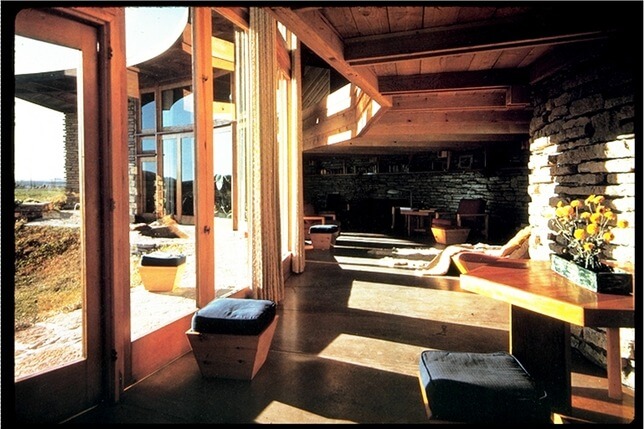We’ve reached that time of year. We seem, for some reason, to spend more time in our homes and less time outdoors.
It’s also that time of year where the thermostat magically seems to rise. Our kids swear they haven’t touched it.
Winter seems great when we think about drinking hot chocolate and opting for staying home for a movie night.
It doesn’t seem great when we despise leaving our beds in the morning when our slippers aren’t nearby. It’s not great when you receive your utility bills stating that you’re now paying twice as much to keep your house warm. There is no money saving here.
If you’re already living in an energy efficient home, then maybe you’re not so worried about this. Maybe the mantra of “save money” isn’t a taboo in your home. But for the majority of Lethbridge homeowners, increasing utility bills are a reality.
Surely there must be a better way.
As much as we’d like you to call us and ask us to build you a super energy-efficient home, we understand there are reasons you’re in the home you’re in. You might not want to move. So, what are your options then?
We’ve Outlined 8 Ways You Can Save Money on Heating This Winter:
1) Utilize Passive Solar Gains
You know that feeling when you get in your car in the winter that has been parked with the windshield facing into the bright sun, and it’s actually comfortable versus outside? That’s the beauty of passive solar gains.
Save money by using what the sun is offering you in free energy and heat, so keep your curtains and blinds open and let the sun shine in.
2) Make Your Home More Air Tight
By finding and sealing all of the leaks and cracks in your home, you can increase its energy efficiency. If hot air gets the chance to escape your home, it will take it.
The problem is, you may not know where to look. An energy adviser can help with this. Having an energy assessment done on your home with a blower door test and thermal imaging will point out your home’s weak points.
Once you’ve found the leaks, you can seal them using caulking and weather stripping.
This could greatly increase your home’s efficiency at a low cost.
It will also make your home healthier, because stopping unwanted air movement will also reduce moisture problems (when warm air meets cold) that can lead to mold and poor air quality.
However, if you make your home too air tight you may need to improve your home’s ventilation system to ensure your home is cycling fresh air.
3) Upgrade the Insulation in Your Home
This may not be the most affordable way to keep your home warmer, but if you’re in an older (and sometimes newer) home, it’s the most effective.
The Alberta Building Code has increased its requirements for insulation and other energy-efficiency factors over the years. The code is not where it should be insulation-wise, but it’s better than it used to be.
If you’re in a newer home and are looking for cheaper ways to keep your home warmer, keep scrolling. If you’re not, and you’re taking increasing energy-efficiency seriously, read this!
Step I: Schedule an Energy Assessment
A certified Energy Adviser will be able to thoroughly inspect and evaluate your home’s performance and provide suggestions on where to improve.
They will also be able to roughly forecast what your home’s performance will be with improved insulation.
Step II: Decide on Areas to Improve
If you’re not interested in, or it isn’t in your budget to increase all of the insulation in your home, try to decide which areas will be the most effective. Your energy adviser will be able to help you with this.
Typically, as warm air rises, it’s best to ensure that your ceiling/attic insulation is well beyond code. If you have access to your attic, bonus! That means easy access to insulate it.
When you think of insulation in walls, you might think of fiberglass, the fluffy pink insulation behind your drywall. This type of insulation became popular because it is the cheapest way to insulate a home.
However, it’s not the most effective way to insulate your home because it does not serve as an air barrier.
Step III: Replacing/Upgrading the Insulation
Save money on utilities by improving the insulation in your framed walls. There are a few ways to do this. One way is to remove all of the drywall to remove old insulation and to insert new insulation.
The second way is to cut small holes in your drywall and blow or inject insulation into your wall.
A professional should complete this to ensure its effectiveness, and to be sure that no electrical or other components behind the wall are damaged.
If you’re planning on renovating or re-siding your home, you can also take that as an opportunity to apply insulation to the exterior wall.
4) Build or Utilize Thermal Mass in Your Home
A thermal mass is a dense and heavy material, like concrete, stone, or brick, that absorbs and stores heat from the sun, and slowly releases it as the temperature outside cools later in the day.
Thermal mass is most effective when placed near windows that allow a lot of sun through. Here’s how it works:

The most common examples of thermal masses are concrete slab floors covered in tile, ceramic, or stone, or interior walls built from stone or brick that are exposed to sunlight. Darker surfaces will absorb more heat.
If you don’t have a concrete floor near a window that you could expose, then perhaps you could build a feature wall from brick or stone as pictured below.

Source: Solar Hemicycle: Jacobs II Passive Solar House – Frank Lloyd Wright
Not only does it serve a purpose in keeping your home warm, but it also gives your home a lot of character. Have an engineer check the structural integrity for the weight that’s added to the floor joist.
5) Keep Your Heat Registers Clear to Allow Heat to Circulate
We’ve all been in the situation where we wanted to place a piece of furniture over a heat register because it worked or looked nice there. However, there is a big fallback to doing this, which is reduced heat circulation in your home.
If you place a shelf or a couch over a register, that couch or shelf may be absorbing the heat and not properly displacing it throughout your home.
If you have animals that shed then regularly remove hair, dust or anything that could block air circulation such as return air grills, furnace filters.
Furnace filters need to be kept clean and changed out regularly.
6) Turn Your Thermostat Down, and Layer Up
Yes, this is an obvious one, and not a comfortable way to save money this winter, but it’s an easy way.
If you find your old-school furnace kicking in what seems like every 30 seconds just to keep your house at a comfortable 21 degrees, then turn your thermostat down a couple of degrees, keep your slippers nearby, and save some money.
This should be a temporary and last resort solution. Remember this will go on and on each winter and will not fix its self.
7) Replace Your Old-School Furnace With an Energy-Efficient Furnace, or Use a Geothermal System
Depending on how old your furnace is, upgrading to a furnace with an annual fuel utilization efficiency (AFUE) rating of 96 can be up to 35% more efficient.
Having a Geothermal system is 400% more efficient. [add link to Rudy’s site}
8) Install a Smart Thermostat in Your Home
Smart thermostats know when the furnace needs to be on, and when the furnace needs to be off. Unlike humans, they don’t forget to set themselves. The smart thermostats like Nest products can help save money by automation.
If you’re already adjusting your thermostat regularly without forgetting, and not just leaving it set at a constant, then a smart thermostat may not save you that much money.
If you’re like most humans, it probably will save money.


